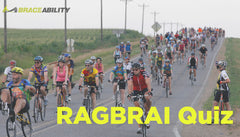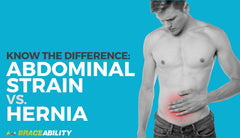Kneecap Pain: What Causes Sore Knees & Joint Treatment Options
Kneecap pain is a relatively common occurrence among both athletes and non-athletes. Among the latter group, it is so common that the term “runners’ knee” is used synonymously for the general medical term for pain in the kneecap—patellofemoral pain. This condition is not well understood, but the term is generally used to refer to a wide number of conditions that can cause knee discomfort around, under, behind or pain below the kneecap, often in association with running or other repetitive actions. View our website for more Knee Injuries and Treatments.
Generally speaking, pain in the kneecap stems from irritation of the tissues around the kneecap, such as tendons, cartilage, ligaments, bones, etc. Considering the amount of stress, impact and the repetitive motions that athletes subject their knees too, it is not surprising that this can result in pain in the kneecap. Learn more about types of knee pain in our Resource Library.
Patellofemoral pain syndrome typically comes on gradually due to overdoing it with one’s activity level, stressing the tissues of the knee and leg. But it can come on suddenly due to a specific event, such as starting a new workout program or competing in a triathlon.
This kneecap pain is typically characterized as a dull ache around the patella, but a burning sensation or sharp pain in kneecap sometimes occurs. Activities such as mounting or descending stairs, squatting or sitting with the knee bent for an extended period (the “theatre sign”) will typically acerbate the pain. Runners’ knee may also come along with a click, pop or crackle sound or sensation in the knee with activity (though a small amount of this is normal).
Causes of Pain on Kneecap
Mechanically speaking, the following abnormalities of the knee joint are some of the common culprits of knee pain on top of the kneecap or under kneecap pain:- Misaligned kneecap
- Dislocated kneecap (full or partial)
- Worn cartilage
Women are more susceptible to a number of these conditions due to their smaller kneecaps that are more likely to track abnormally as well as the greater angle at which the bones in the knee joint meet due to the female's wider pelvis.
What causes these problematic issues with the knee? A few common culprits include:
- Overuse/strain
- Flat feet (excessive pronation)
- Bow-legged or knock-kneed stance
- Weak or imbalanced thigh muscles
- Tight muscles, ligaments or tendons
- Trauma
Pain Below Kneecap & Pain Above Kneecap
Chondromalacia patella refers to the deterioration of the cartilage of the kneecap. This cartilage begins to naturally erode around the age of 15, but certain sports and injuries can damage this earlier in life. This condition is most common among young adults and adolescents. Without this cushion, the joint lining and bones of the knee joint can become irritated, causing knee pain under the kneecap.
The typical mode of treatment for chondromalacia is strength exercises and stretches for the quadriceps possibly along with taping or knee braces for added support and improved kneecap alignment. The Chondromalacia Knee Brace, as implied by the name, is designed with this condition specifically in mind.
Ice and over-the-the-counter medications can also be helpful for relieving inflammation and pain. Switching to a sport that puts less stress on the knees may also be suggested. View all of BraceAbility's knee pain treatment options.
 Patellofemoral malalignment is another condition that causes pain above the kneecap, pain below the kneecap, pain under the kneecap—you get the picture; pain in the kneecap area. This often stems from unbalanced forces acting on the knee joint, with the result being a patella that is not centered within the trochlear groove. Or this groove might be too shallow or the patella abnormally shaped.
Patellofemoral malalignment is another condition that causes pain above the kneecap, pain below the kneecap, pain under the kneecap—you get the picture; pain in the kneecap area. This often stems from unbalanced forces acting on the knee joint, with the result being a patella that is not centered within the trochlear groove. Or this groove might be too shallow or the patella abnormally shaped.
Whatever the cause, the abnormal gliding, and friction that result causes the aforementioned kneecap pain as well as instability of the knee.
Patellofemoral malalignment treatment typically focuses on treating the underlying cause via bracing, stretches, strength training, foot orthotic use, etc. This lightweight knee brace can help one get back to an active lifestyle as it eases pain, provides stability, and promotes healing. This brace is ideal for athletic use.
Surgery is another line of defense, though it is certainly not a physicians’ first choice.




